Injectable Fillers
Injectable Fillers in Carmel, IN
Injectable fillers are commonly used to reverse the effects of aging and create stronger facial features. Patients have been visiting Dr. Barry Eppley for years to receive a variety of these synthetic injectable treatments. Please read the associated text on this page and visit the injectable filler before and after results page to learn more about the effectiveness of this treatment.
THE ROLE OF INJECTABLE FILLERS IN FACIAL REJUVENATION
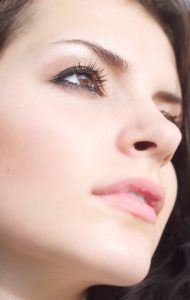 Injectable fillers, like Botox and other neuromuscular modulators, have revolutionized how the treatment of facial aging is done. They have provided excellent non-surgical options to begin early treatment of the signs of facial aging and to enhance one’s facial features. Injectable fillers can be successfully used for the following:
Injectable fillers, like Botox and other neuromuscular modulators, have revolutionized how the treatment of facial aging is done. They have provided excellent non-surgical options to begin early treatment of the signs of facial aging and to enhance one’s facial features. Injectable fillers can be successfully used for the following:
– nasolabial folds (lip-cheek grooves)
– marionette lines
– downturned corners of the mouth
– vertical lip lines
– lip augmentation
– under eye hollows/tear troughs
– cheek, chin and jawline augmentation
– non-surgical rhinoplasty
– facial volume enhancement (aka liquid facelift)
THE HISTORY OF INJECTABLE FILLERS
While today’s use of injectable fillers seems relatively new, they have been around since 1981. The use of injectable collagen solutions for the filling out of depressed facial scars, fine lines and wrinkles, and enhancement of other facial structures (e.g., lips) was the original injectable filler and was used successfully until 2002. Such collagen fillers derived from cow sources were plagued, however, by quickly being absorbed and going away in less than six weeks. In addition, some people were allergic to these animal-derived collagen materials and pre-treatment skin testing was a necessity. But even with a negative skin test, some people still developed allergic reactions to the collagen injections.
TODAY’S INJECTABLE FILLER OPTIONS
 Over the past decade, many new and differently formulated injectable fillers have become available. They are so many options for injectable fillers today that it can be confusing. No one practice carries them all as that is unnecessary as many of their properties are similar. But the concept of modern injectable fillers can be divided into temporary hyaluronic acid and particulated type fillers as well as permanent injectable fillers.
Over the past decade, many new and differently formulated injectable fillers have become available. They are so many options for injectable fillers today that it can be confusing. No one practice carries them all as that is unnecessary as many of their properties are similar. But the concept of modern injectable fillers can be divided into temporary hyaluronic acid and particulated type fillers as well as permanent injectable fillers.
Hyaluronic Acid Fillers
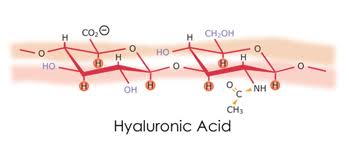 The most popular and commonly used injectable filler today is composed of hyaluronan (also known as hyaluronic acid or HA), a natural sugar, and has completely replaced collagen as the preferred injectable material. Because HA is a natural component of the body’s extracellular matrix, it is not seen as a foreign body and immunologic reactions to it are very few. As a result, pre-treatment skin testing is not necessary. The material is hydrophilic (absorbs water), which helps its filling effect, and is also the mechanism by which it is eventually absorbed.
The most popular and commonly used injectable filler today is composed of hyaluronan (also known as hyaluronic acid or HA), a natural sugar, and has completely replaced collagen as the preferred injectable material. Because HA is a natural component of the body’s extracellular matrix, it is not seen as a foreign body and immunologic reactions to it are very few. As a result, pre-treatment skin testing is not necessary. The material is hydrophilic (absorbs water), which helps its filling effect, and is also the mechanism by which it is eventually absorbed.
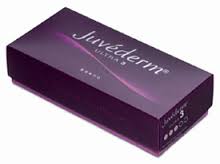 Numerous formulations of hyaluronic acid fillers exist and are widely used around the world. Based on how it is manufactured and concentrated a wide range of filler properties can be created, most importantly how long they can last. Hyaluronic acid filler effects can be made to last as short as 3 months to as long as a year. Some of the most popular and well know fillers of this category include Juvederm and Restylane.
Numerous formulations of hyaluronic acid fillers exist and are widely used around the world. Based on how it is manufactured and concentrated a wide range of filler properties can be created, most importantly how long they can last. Hyaluronic acid filler effects can be made to last as short as 3 months to as long as a year. Some of the most popular and well know fillers of this category include Juvederm and Restylane.
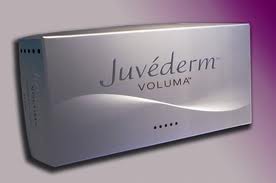 The properties of hyaluronic fillers can also be adjusted based on the aesthetic need for which it is being used. Less concentrated fillers are made for fine wrinkles while more highly concentrated ones are used for volumetric facial augmentation such as the new Juvederm Voluma XC.
The properties of hyaluronic fillers can also be adjusted based on the aesthetic need for which it is being used. Less concentrated fillers are made for fine wrinkles while more highly concentrated ones are used for volumetric facial augmentation such as the new Juvederm Voluma XC.
Particulated Injectable Fillers
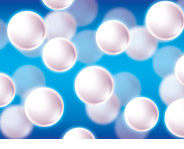
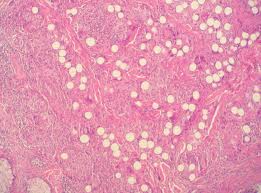 The concept of a particulated filler is one in which it contains resorbable or non-resorbable particles which extends the duration of the filler’s effects. (how long they last) Because of the risk of clumping or irregularities from these particles, they should not be used in the lips or around the eyes (periorbital area) but should be used for deeper tissue injections for volume enhancement as well as for temporary cheek, chin and jawline enhancement.
The concept of a particulated filler is one in which it contains resorbable or non-resorbable particles which extends the duration of the filler’s effects. (how long they last) Because of the risk of clumping or irregularities from these particles, they should not be used in the lips or around the eyes (periorbital area) but should be used for deeper tissue injections for volume enhancement as well as for temporary cheek, chin and jawline enhancement.
Radiesse
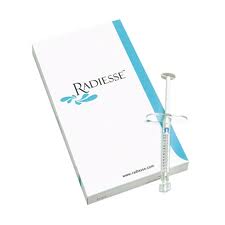 Radiesse is a particulate injectable filler that is a mixture of an aqueous gel carrier and calcium hydroxylapatite microspheres. The carrier is simply a mechanism that allows the microspheres to be injected and dispersed throughout the injection site. When injected the microspheres cause collagen deposition around them. Over the course of a year after being injected, the microspheres dissolve and the volumizing effect largely goes away.
Radiesse is a particulate injectable filler that is a mixture of an aqueous gel carrier and calcium hydroxylapatite microspheres. The carrier is simply a mechanism that allows the microspheres to be injected and dispersed throughout the injection site. When injected the microspheres cause collagen deposition around them. Over the course of a year after being injected, the microspheres dissolve and the volumizing effect largely goes away.
Sculptra
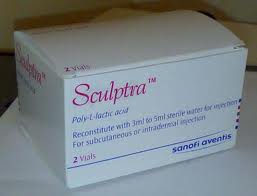 Sculptra is a particlated injectable filler that was originally used and approved to treat facial lipoatrophy due to HIV medications. It has more recently received approval for wider use as a general facial injectable filler. It is unique amongst injectable fillers not only because of its composition but in how it works and how the injection treatments are given. Sculptra is composed of resorbable polymeric crystals made up of poly-lactic acid. It works by causing a localized reaction of collagen formation somewhat similar to scar tissue. This tissue will persist as long as the crystals persist which can be more than a year. It is given over a series if three injections sessions spaced 4 to 6 weeks apart to gradually build up the soft tissue response. It is best thought of like planting seeds in the garden and waiting for them to grow. A series of Sculptra treatments to the face may last as long as 18 months.
Sculptra is a particlated injectable filler that was originally used and approved to treat facial lipoatrophy due to HIV medications. It has more recently received approval for wider use as a general facial injectable filler. It is unique amongst injectable fillers not only because of its composition but in how it works and how the injection treatments are given. Sculptra is composed of resorbable polymeric crystals made up of poly-lactic acid. It works by causing a localized reaction of collagen formation somewhat similar to scar tissue. This tissue will persist as long as the crystals persist which can be more than a year. It is given over a series if three injections sessions spaced 4 to 6 weeks apart to gradually build up the soft tissue response. It is best thought of like planting seeds in the garden and waiting for them to grow. A series of Sculptra treatments to the face may last as long as 18 months.
Artefill
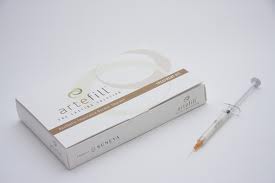 Artefill is a particulate injectable filler that is comprised of plastic (PMMA) microbeads suspended in a collagen carrier. Unlike the other particulated fillers, the PMMA beads do not resorb and thus there is some permanent volume effect. Because the beads only occupy a small portion of the total filler volume (approximately 20%), a permanent volume effect requires a series of injections over time for a sustained effect. Artefill has recently been shown to be very useful in the treatment of certain types of acne scars.
Artefill is a particulate injectable filler that is comprised of plastic (PMMA) microbeads suspended in a collagen carrier. Unlike the other particulated fillers, the PMMA beads do not resorb and thus there is some permanent volume effect. Because the beads only occupy a small portion of the total filler volume (approximately 20%), a permanent volume effect requires a series of injections over time for a sustained effect. Artefill has recently been shown to be very useful in the treatment of certain types of acne scars.
Permanent Injectable Filler (Silicon)
![]() The only truly permanent injectable filler is the use of liquid silicone oil. By applying small amounts of silicone oil in a micro droplet fashion, a permanent collagen formation can develop that does not cause an inflammatory reaction. Its use requires a very sensitive injection technique to avoid adverse tissue reactions and nodules. It is also important that every patient understand that silicone oil is not currently FDA-approved as a facial injectable filler and its use is off-label for this aesthetic purpose.
The only truly permanent injectable filler is the use of liquid silicone oil. By applying small amounts of silicone oil in a micro droplet fashion, a permanent collagen formation can develop that does not cause an inflammatory reaction. Its use requires a very sensitive injection technique to avoid adverse tissue reactions and nodules. It is also important that every patient understand that silicone oil is not currently FDA-approved as a facial injectable filler and its use is off-label for this aesthetic purpose.
Which Injectable Filler Is Right For Me?
Due of the number of commercially-available injectable fillers, the best choice for any patient and their facial concerns should be discussed with a plastic surgeon. Choosing the best injectable filler is based on understanding where they can be placed, how long they will last, how much they will cost and the risk of side effects.
Injectable Fillers For Facial Volume Enhancement
While once used exclusively for more superficial treatments like wrinkles, folds and lip augmentation, injectable fillers today have expanded into equally useful roles as facial volumizing agents. Restoring lost facial volume is recognized as a beneficial treatment for am overall facial rejuvenate effect. The more viscous hyaluronic-acid based and particulated fillers have the capability to provide a better soft tissue push and actual lifting of the deeper tissues and skin. While only providing a temporary effect, plumping out a thin or gaunt face without surgery or fat injections has a useful facial enhancement role.
Injectable Fillers for Facial Bone Augmentation
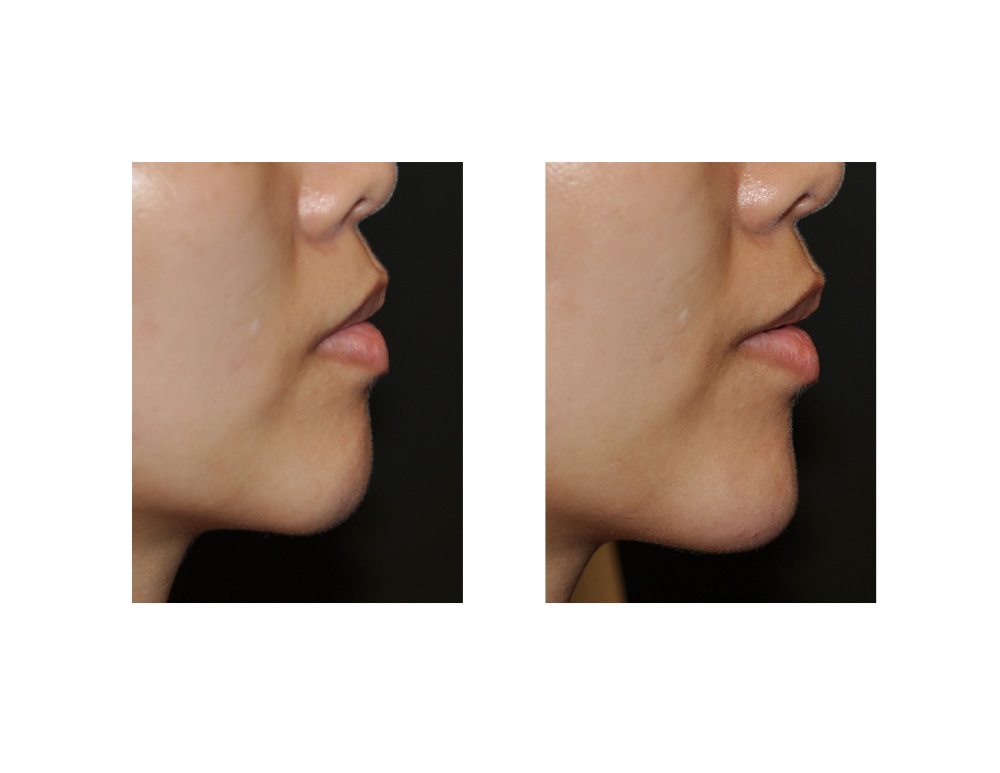 As a spin off of creating facial volume, certain types of injectable fillers can be used to augment facial skeletal areas that have been traditionally done by the surgical placement of synthetic implant materials. Creating more prominent brow ridges, chin, cheeks and jaw angles can be done by injectable fillers. While never creating the exact identical effect of implants and only being of temporary duration, injectable fillers can serve as a trial facial implant. For someone who wants to see how an implant may look without a surgical commitment, injectable fillers can have a useful role.
As a spin off of creating facial volume, certain types of injectable fillers can be used to augment facial skeletal areas that have been traditionally done by the surgical placement of synthetic implant materials. Creating more prominent brow ridges, chin, cheeks and jaw angles can be done by injectable fillers. While never creating the exact identical effect of implants and only being of temporary duration, injectable fillers can serve as a trial facial implant. For someone who wants to see how an implant may look without a surgical commitment, injectable fillers can have a useful role.
The Versatility of Injectable Fillers
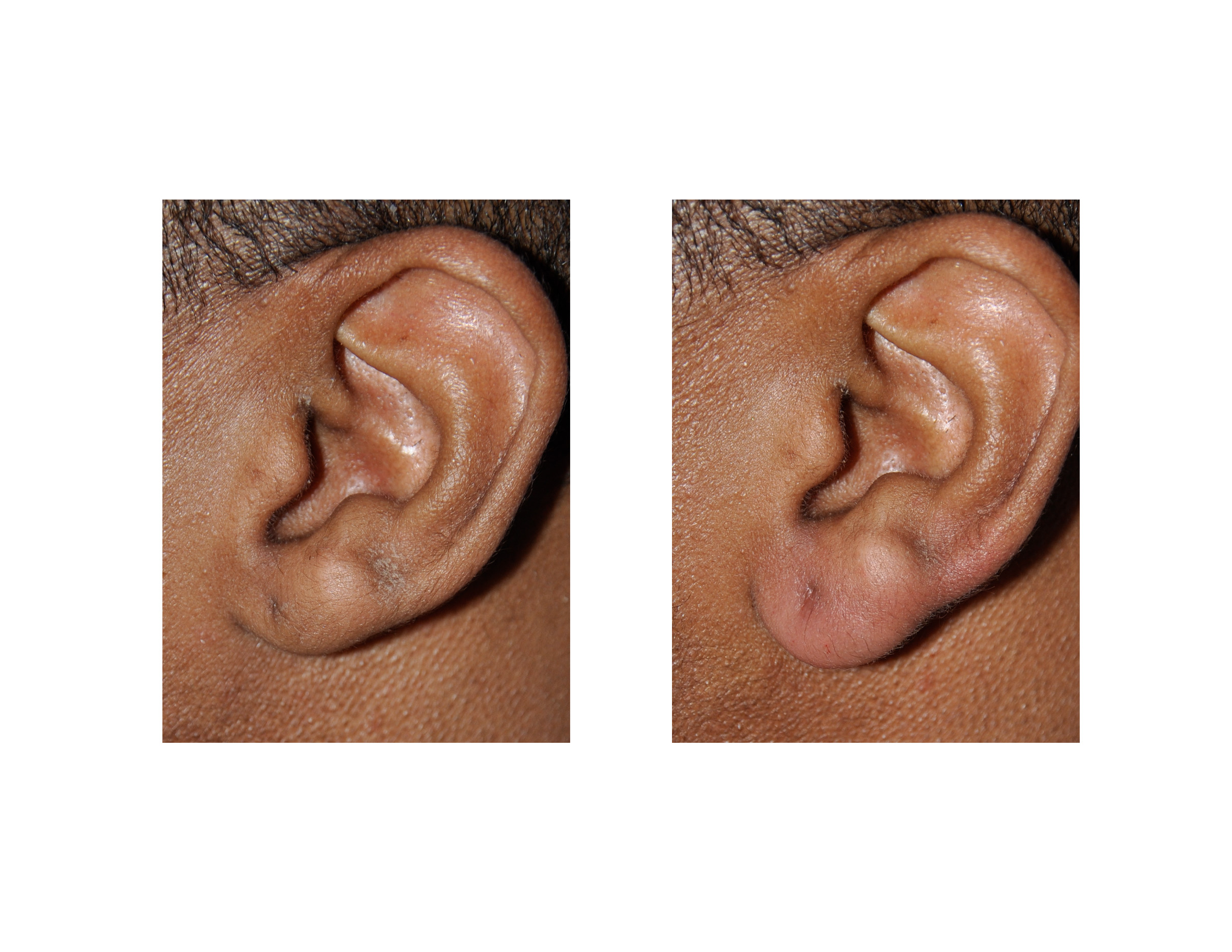 Because they are administered through a small needle, injectable fillers can be placed virtually anywhere… and with uses never conceived of before. This example of earlobe enlargement by injection illustrates these points.
Because they are administered through a small needle, injectable fillers can be placed virtually anywhere… and with uses never conceived of before. This example of earlobe enlargement by injection illustrates these points.
INJECTABLE VEIN TREATMENTS
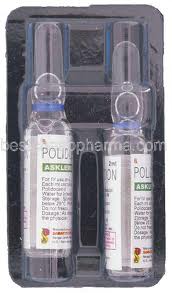 While not a filler, another popular injectable treatment is sclerotherapy. Used for the treatment of unsightly spider and reticular veins, sclerotherapy injections cause these small vessels to clot off which makes them less visible. The historic sclerotherapy agent, hypertonic saline, has been around for decades as well as sodium sotradecol. More recently a newer sclerotherapy agent, Asclera (piladocinol), has become available. It offers similar effectiveness for spider veins as hypertonic saline and sodium sotradecol but causes less discomfort on injection and fewer potential side effects (blisters, hyperpigmentation) at the site of injection. All three available sclerotherapy agents can work and each treater has their own preferences.
While not a filler, another popular injectable treatment is sclerotherapy. Used for the treatment of unsightly spider and reticular veins, sclerotherapy injections cause these small vessels to clot off which makes them less visible. The historic sclerotherapy agent, hypertonic saline, has been around for decades as well as sodium sotradecol. More recently a newer sclerotherapy agent, Asclera (piladocinol), has become available. It offers similar effectiveness for spider veins as hypertonic saline and sodium sotradecol but causes less discomfort on injection and fewer potential side effects (blisters, hyperpigmentation) at the site of injection. All three available sclerotherapy agents can work and each treater has their own preferences.
Injectable Fillers – Before Treatment
While old-style collagen injections required a skin test, hyaluronic acid injectables do not as they are synthetic analogues of a natural sugar which is found extensively throughout one’s bodily tissues. The particulated fillers and sclerotherapy agents also do not require a skin test.
Injectable Fillers – Procedure
The placement of injectable products is a simple and quick office procedure that takes but a few minutes. In most cases, it is done without topical or local anesthesia. The use of microcannula for placement, as opposed to a needle, has drastically changed the injectable filler experience. Microcannulas are very small blunt-tipped metal tubes that can move around under the skin with little discomfort (feeling of pressure) and no risk of bruising because they are not sharp. They do not cut tissue but just push it aside. This has made even historically painful lip injections a far more comfortable experience.
Sclerotherapy is done as an office procedure that does not require local anesthesia. The sclerotherapy solution is mixed with a small amount of local anesthetic to make the injections as comfortable as possible. A sclerotherapy session usually lasts about 30 minutes and as many spider veins are injected as possible during that time.
Injectable Fillers – After Treatment
There are no special instructions or care needed after any injected filled facial area. The areas may be slightly red for a few hours but will look normal either later in the day or by the next day. One can eat, drink, and exercise normally immediately after the treatment.
After sclerotherapy, the injected areas on the legs are wrapped for compression for 24 hours. They may be removed the next day. One should only refrain from running or sitting in a hot tub for a few days after the procedure.
Injectable Fillers – Cost
There are two different cost levels for injectable fillers, those done by Dr. Eppley or by his nurse (RN). Because of the large number of available injectable filler options, syringe sizes and frequent specials and promotions, the cost of an injectable filler treatment is best done by calling one of our offices.

North Meridian Medical Building
Address:
12188-A North Meridian St.
Suite 310
Carmel, IN 46032
Contact Us:
Phone: (317) 706-4444
WhatsApp: (317) 941-8237
